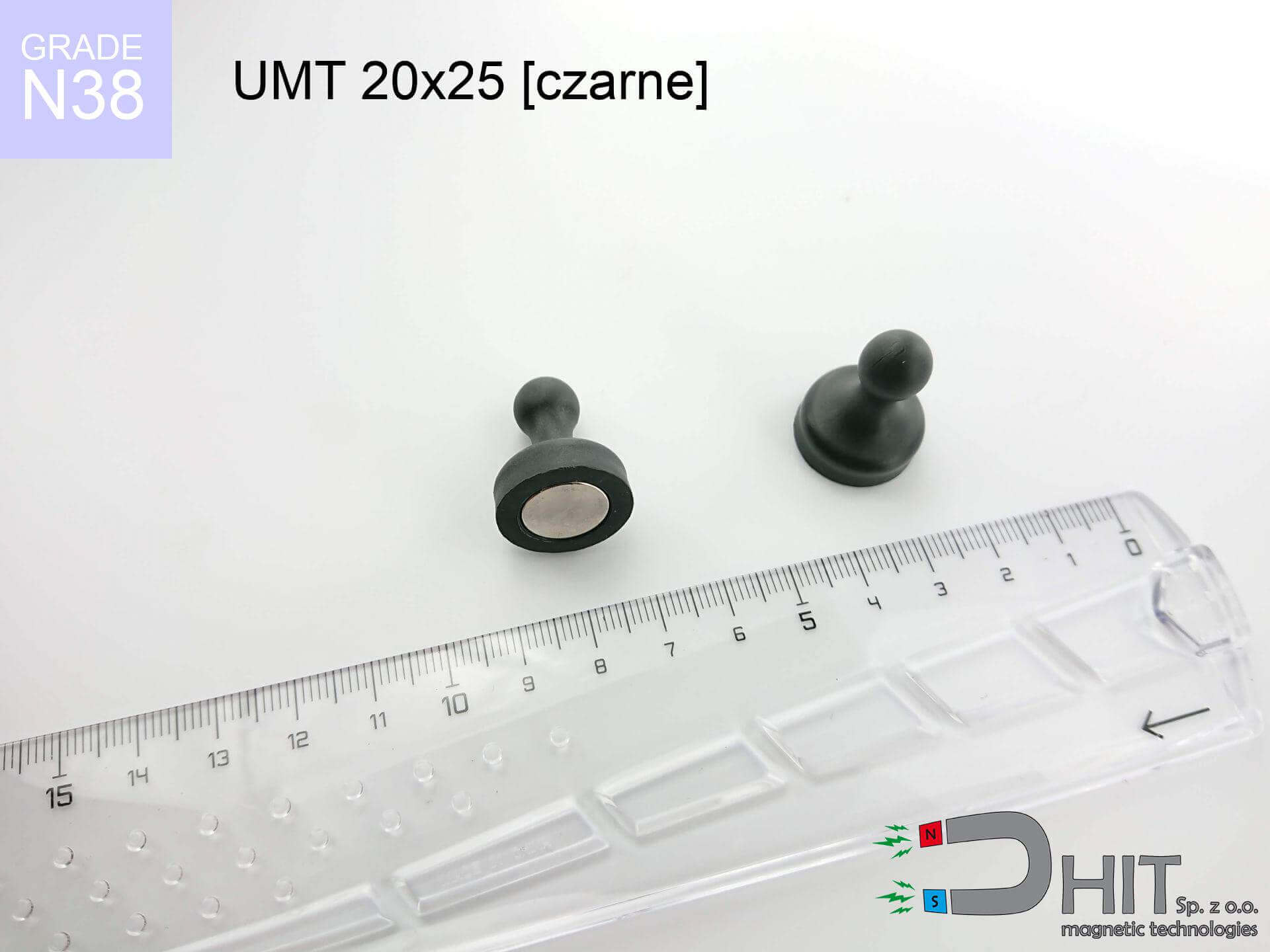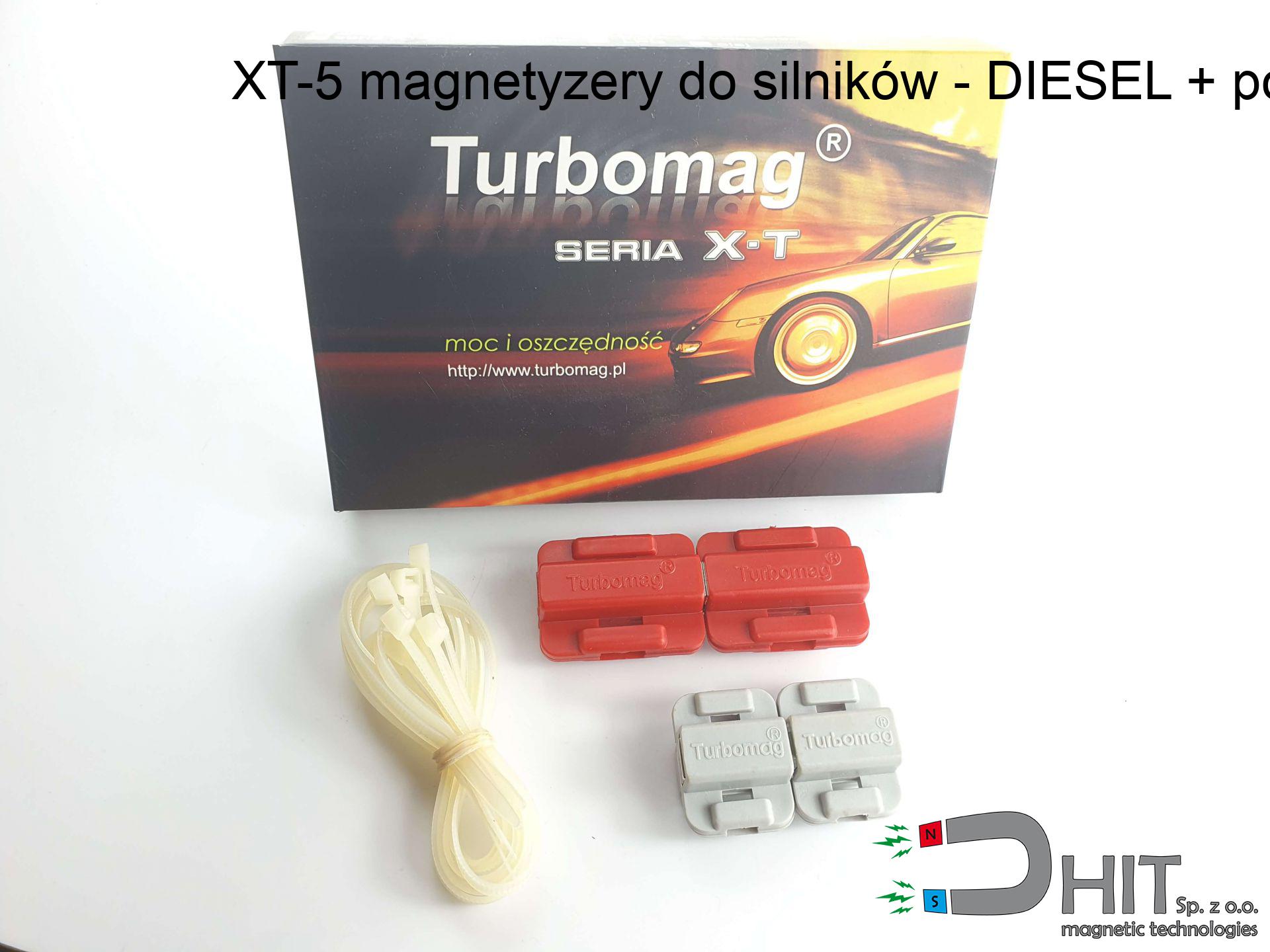UMT 20x25 black / N38 - magnetic pin
board holder
catalog number 230263
GTIN: 5906301814269
diameter Ø
20
mm [±0,1 mm]
height
25
mm [±0,1 mm]
max. temperature
≤ 80
°C
catalog number 230263
GTIN: 5906301814269
diameter Ø
20 mm [±0,1 mm]
height
25 mm [±0,1 mm]
max. temperature
≤ 80 °C
3.49 ZŁ gross price (including VAT) / pcs +
2.84 ZŁ net price + 23% VAT / pcs
bulk discounts:
need more quantity?Don't know what to choose?
Call us tel: +48 22 499 98 98 or write through contact form on the contact page. You can check the power and the shape of magnet in our force calculator power calculator
Orders placed by 2:00 PM will be shipped on the same business day.
Specification: board holder 20x25 black / N38
Magnetic properties of the material N38
Physical properties of sintered neodymium magnets Nd2Fe14B
Recommended articles for purchase
Advantages as well as disadvantages of neodymium magnets NdFeB.
In addition to immense power, neodymium magnets have the following advantages:
- They do not lose their power (of the magnet). After approximately 10 years, their strength decreases by only ~1% (theoretically),
- They are exceptionally resistant to demagnetization caused by an external magnetic field,
- In other words, thanks to the glossy nickel, gold, or silver finish, the element gains an visually attractive appearance,
- They possess very high magnetic induction on the surface of the magnet,
- Thanks to their high temperature resistance, they can operate (depending on the form) even at temperatures up to 230°C and above...
- Thanks to the flexibility in shaping or the ability to adapt to specific requirements – neodymium magnets can be produced in a wide range of shapes and sizes, which expands the range of their possible uses.
- Key role in the industry of new technologies – find application in HDD drives, electric motors, medical devices and various technologically advanced devices.
Disadvantages of neodymium magnets:
- They are prone to breaking as they are extremely fragile when subjected to a powerful impact. If the magnets are exposed to impacts, it is suggested using magnets in a protective case. The steel housing in the form of a holder protects the magnet from impacts and simultaneously increases its overall strength,
- Magnets lose their strength due to exposure to high temperatures. In most cases, when the temperature exceeds 80°C, these magnets experience permanent reduction in strength (although it is worth noting that this is dependent on the form and size of the magnet). To avoid this problem, we offer special magnets marked with the [AH] symbol, which exhibit high temperature resistance. They can operate even at temperatures as high as 230°C or more,
- Due to their susceptibility to corrosion in a humid environment, we recommend using waterproof magnets made of rubber, plastic, or other moisture-resistant materials when using them outdoors,
- The use of a cover or a magnetic holder is recommended due to the limited possibilities of manufacturing threads or complex shapes in the magnet
- Health risk to health from tiny fragments of magnets can be dangerous, if swallowed, which is crucial in the context of children's health. Furthermore, tiny parts of these devices can complicate diagnosis when they are in the body.
Exercise Caution with Neodymium Magnets
Neodymium magnets should not be near people with pacemakers.
Neodymium magnets produce strong magnetic fields that can interfere with the operation of a heart pacemaker. However, if the magnetic field does not affect the device, it can damage its components or deactivate the device when it is in a magnetic field.
Neodymium magnets can attract to each other, pinch the skin, and cause significant swellings.
In the situation of holding a finger in the path of a neodymium magnet, in that situation, a cut or even a fracture may occur.
Never bring neodymium magnets close to a phone and GPS.
Magnetic fields generated by neodymium magnets interfere with compasses and magnetometers used in navigation, as well as internal compasses of smartphones and GPS devices.
Dust and powder from neodymium magnets are flammable.
Do not attempt to drill into neodymium magnets. Mechanical processing is also not recommended. Once crushed into fine powder or dust, this material becomes highly flammable.
Keep neodymium magnets away from the wallet, computer, and TV.
Strong magnetic fields emitted by neodymium magnets can destroy magnetic storage media such as floppy disks, credit cards, magnetic ID cards, cassette tapes, video tapes, or other devices. They can also damage televisions, VCRs, computer monitors, and CRT displays. Avoid placing neodymium magnets in close proximity to electronic devices.
Neodymium magnets are extremely fragile, leading to breaking.
Magnets made of neodymium are fragile and will crack if allowed to collide with each other, even from a distance of a few centimeters. Despite being made of metal and coated with a shiny nickel plating, they are not as hard as steel. At the moment of collision between the magnets, small sharp metal pieces can be propelled in various directions at high speed. Eye protection is recommended.
Neodymium magnets can demagnetize at high temperatures.
Despite the fact that magnets have been observed to maintain their efficacy up to temperatures of 80°C or 175°F, it's essential to consider that this threshold may fluctuate depending on the magnet's type, configuration, and intended usage.
Neodymium magnets should not be around children.
Remember that neodymium magnets are not toys. Do not allow children to play with them. They can be a significant choking hazard. If multiple magnets are swallowed, they can attract to each other through the intestinal walls, causing significant injuries, and even death.
The magnet is coated with nickel. Therefore, exercise caution if you have an allergy.
Studies clearly indicate a small percentage of people who suffer from metal allergies such as nickel. An allergic reaction often manifests as skin redness and rash. If you have a nickel allergy, you can try wearing gloves or simply avoid direct contact with nickel-plated neodymium magnets.
Neodymium magnets are the strongest, most remarkable magnets on earth, and the surprising force between them can surprise you at first.
Please review the information on how to handle neodymium magnets and avoid significant harm to your body, as well as prevent unintentional disruption to the magnets.
Please see the article - What danger lies in neodymium magnets? You will learn how to handle them properly.


![magnetic beam 750x180x70 [4x M8] magnetic beam 750x180x70 [4x M8]](https://cdn3.dhit.pl/graphics/products/bm-750x180x70-4x-m8-zif.jpg)
![magnetic holder rubber internal thread 34x8 [M4] GW / N38 magnetic holder rubber internal thread 34x8 [M4] GW / N38](https://cdn3.dhit.pl/graphics/products/umg-34x8-m4-gw-kek.jpg)



